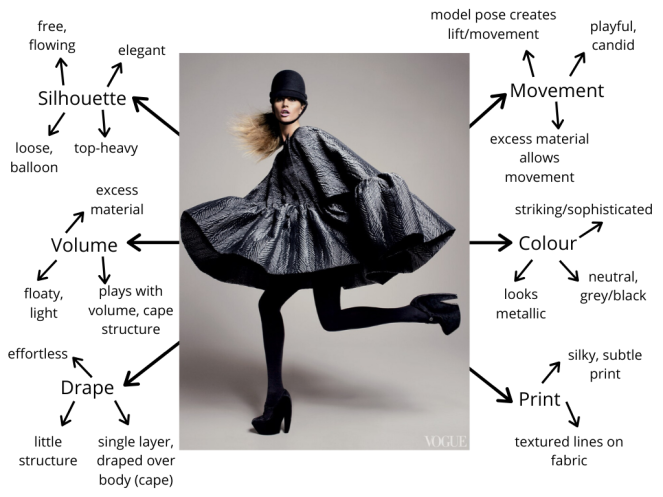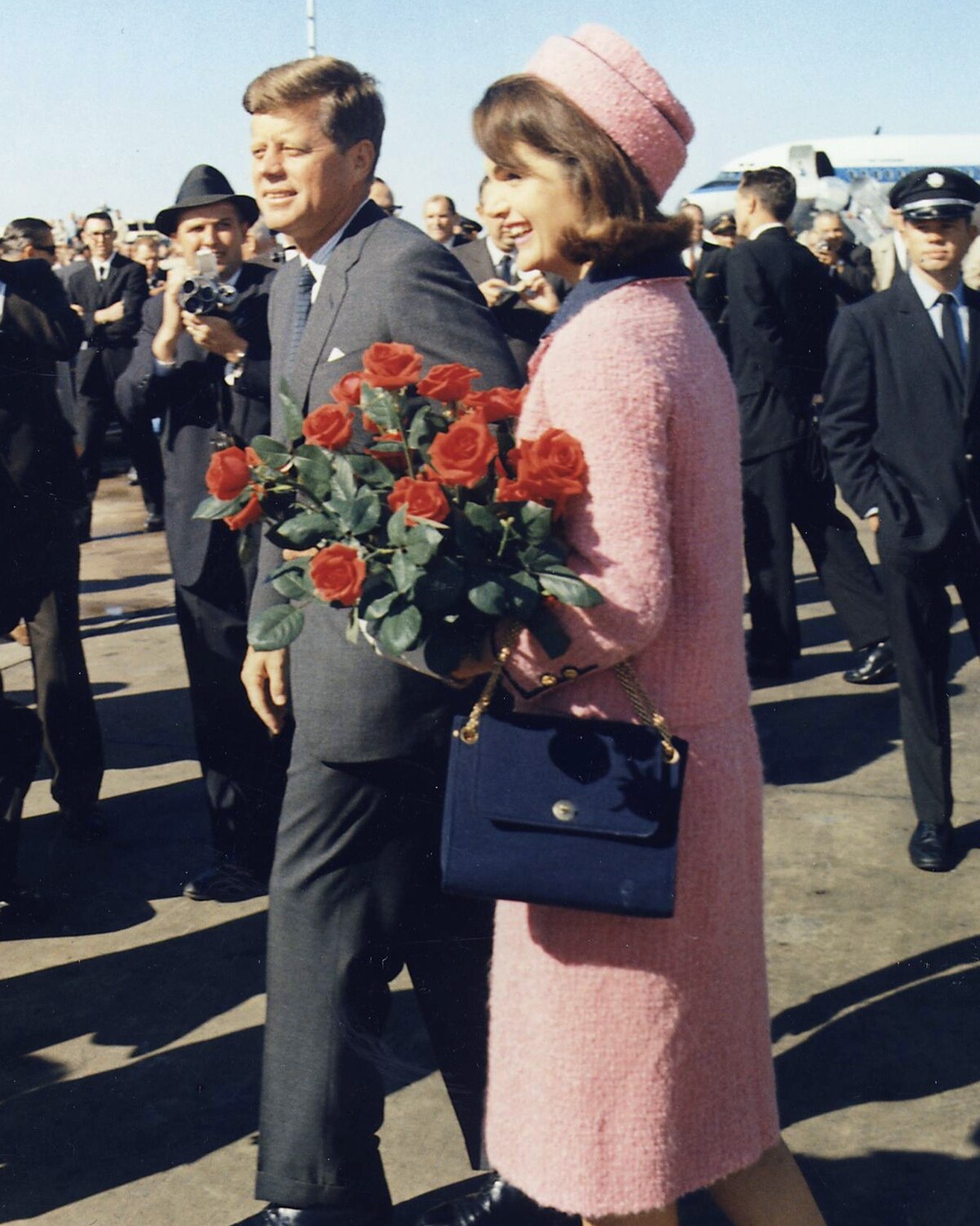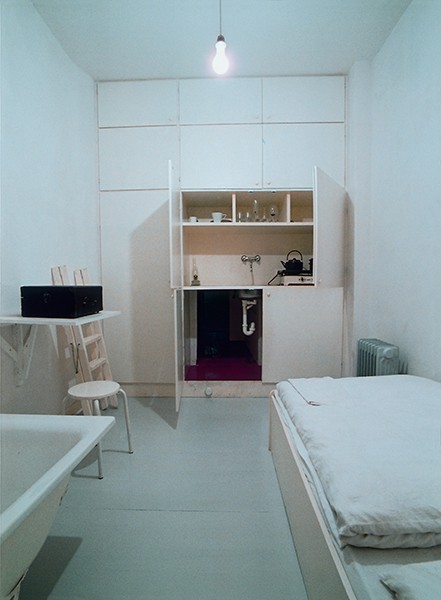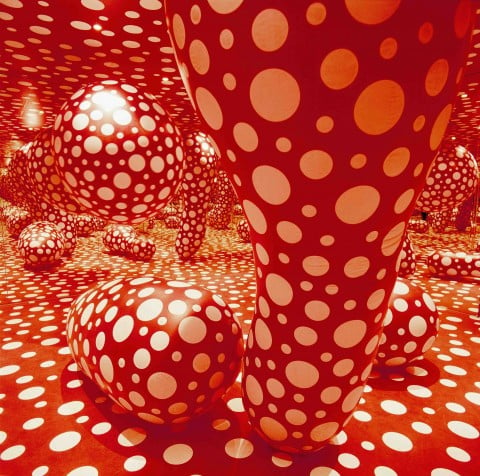For this exercise, I chose to use this image of Gisele Bündchen in a Balenciaga grey silk cape by Nicolas Ghesquière. Photographed by David Sims for Vogue, 2006.

What are the textile qualities present?
Silhouette: The garment is a cape so it’s designed to be loose and free moving due to excess fabric. Not figure hugging and cuts off above knees. The rest of the outfit is more fitted and in a simple black to keep attention/focus on top half of the models body, and the garment itself.
Volume: Ghesquière plays with volume through the pleating of extra fabric to create a cape and almost balloon or parachute effect. The volume conveys that the material is light and able to float/move.
Drape: The cape appears fairly effortlessly draped over the models body due to it being aingle layer of material. Furthermore, there is little rigid structure.
Movement: The excess material allows movement because it isn’t tight fitted or structured, instead it’s more free flowing. The model appears playful and David Sims is known for his candid poses that capture more dynamic movement and in this case, also creates lift from the cape.
Colour: Due to the cape being a neutral grey, the colour is very minimal and subtle. Also, the other accessories are black, against a grey background. The silk fabric looks sophisticated and elegant, almost with a metallic effect due to the sheen of the silk.
Print: This wouldn’t be a garment picked out for the use of print however, if you look closely there are some lines that add texture to the silk.
What is the context of the garment? What is the image for?
The garment itself was part of the Balenciaga Autumn/Winter Ready-To-Wear collection, 2006. In this Vogue article by Sarah Mower she highlights how Ghesquière created ‘extraordinary volumes’, ‘new proportions’ and a ‘powerful modernity’ – reflecting 1950 couture. For this particular photo of the garment, Gisele Bündchen was photographed by David Sims in New york, July 2006.
How does this affect its appearence and focus?
Whilst I don’t know what intentions David Sims had for this photo, his definitely highlight the volume and movement or the cape. The idea of ‘powerful modernity’ fits the styling and composition of the photo. The neutral background and candid/action pose showcases the textile qualities and the model still appears elegant but playful and modern.
How do you relate to the image?
Gisele Bündchen looks elegant and sophisticated but also powerful, important and busy which I think creates a healthy portrayal of women. It’s certainly a fashion photo that I find more interesting and dynamic than some traditional model poses and they can sometimes appear vacant or too ‘perfect’. I think David Sims manages to showcase the garment and model in an engaging way that makes it a more aesthetic image to me.
Is the model important?
The particular pose is important to the overall effect of photo. The model has to understand the garment – it’s textile qualities an how it moves, as well as working with the photographer to create a successful photo. It’s possible that some people couldn’t achieve the desired candid and playful pose while still looking elegant and keeping focus on the garment.


















